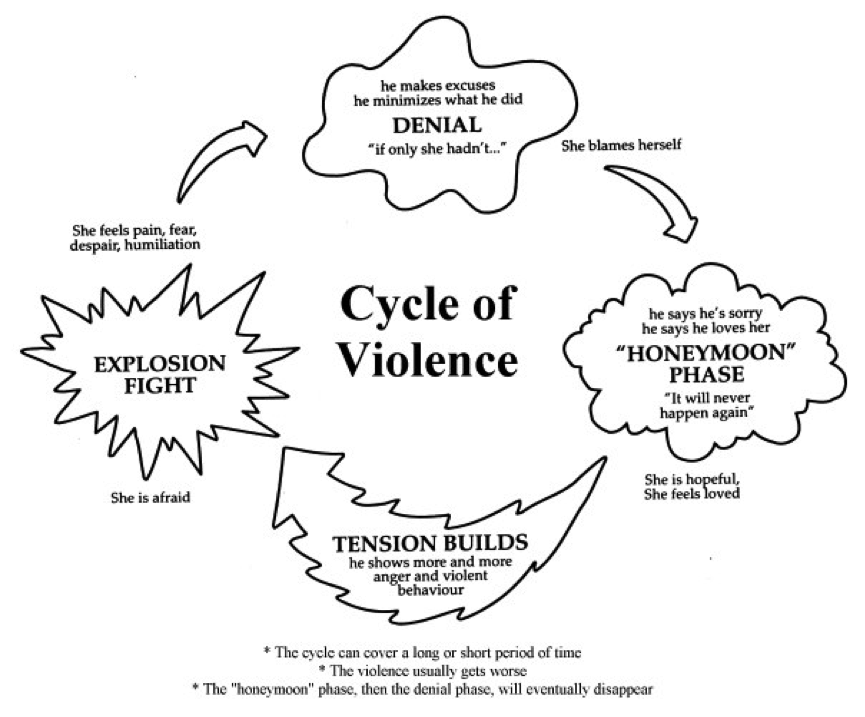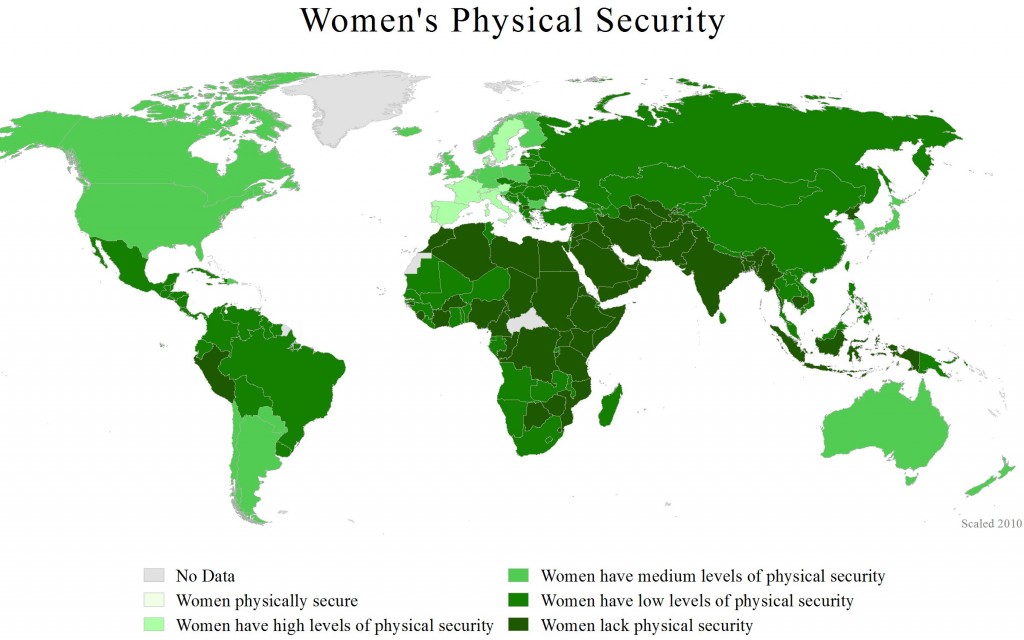One in every four women will experience domestic violence in her lifetime. This type of violence is the leading cause of injury to women between the ages of 15 and 44 in the United States, that is more than car accidents, muggings, and rapes combined. In 1990 there was 1,500 shelters for battered women, there was 3.800 animal shelters.
Who do you look at as your idea of a healthy relationship? Your parents, your aunt and uncle, maybe your friends? Many people would probably say that a good relationship is established by trust, love, and cooperation. Unfortunately there are a lot of relations that lack those qualities. Thousands and thousands of individuals are experiencing domestic violence at this moment. The kisses and hugs can easily turn in to threats and punishments. People out there might be scared of being left alone with the one they are supposed to be most comfortable with.
What is domestic violence?
Domestic violence is a pattern of behaviors used to establish power and control over another person through fear and intimidation, often including threats or use of violence. The different acts of violence could also be psychological abuse including isolation to control the other person. As mentioned by Marsha Marcoe, the Associate Executive Director for Domestic Violence Solutions for Santa Barbara County: “Sometimes the emotional abuse can be much more damaging, because you get a women to stay where she is, she learns to be helpless and hopeless”. Domestic violence and abuse can happen to anyone, regardless of gender, race, culture, ethnic groups, sexual orientation, income, or educational level. The responsibility for the violence belongs to the abuser; it is never the victim´s fault.
Why do the victims stay in the relationship?
It is important for us to understand why the victims might want to stay in the abusive relationship. We often put ourselves in the place of the victims and imagine ourselves leaving at the first sign of abuse. There are however many reasons why the victim might not leave. Strong emotional and psychological forces keep the victim tied to the abuser. The victim can feel helpless, hopeless, and trapped in the situation. Reasons could be economical dependency on the abuser, social isolation, cultural or religious beliefs, and fear of physical harm on children or themselves. One can also ask if it is the lack of help when they eventually leave the relationship? There are 603 million women that live in countries where domestic violence is not yet considered a crime.
Domestic Violence Solution Organization
Throughout the country, there are a lot of organizations that work to end domestic violence. Domestic Violence Solution for Santa Barbara is one of them. Their mission is ”to end the intergenerational cycle of domestic violence by providing prevention and intervention services and by challenging society’s attitudes, beliefs and behaviors to effect social change”. The organization provide:
- Safe and confidential shelter for battered women and their children throughout Santa Barbara County.
- Emotional support and personal advocacy to battered women in crisis. ”We encourage women to be empowered to be free to make choices”.
- Playing a leadership role in effecting social change by educating the community, by associations with other social change groups and by supporting the work of women’s right organizations.
Marsha Marcoe—the Associate Executive Director for Domestic Violence Solutions for Santa Barbara Country received her Master’s Degree in Clinical Psychology at Antioch University and has served on several non-profit boards. “Women´s issue has always been a part of my life, how to allocate women and children in our society, women are still behind”. Marcoe referred to Martin Luther King’s monument in Washington; his body is coming out of a chunk of marble, making it look like it is not complete, but yet King is trying to force himself out of the rock. The solution for domestic violence is just like that monument: “ We have come a long way, but it is not complete, women still have the smallest voice”.
How much do we care?
It can be hard to know what is happening in a relationship behind closed doors. But even when domestic violence is happening in public spaces, people still hesitates to intervene, according to a new social experiment video. The group STHLM Panda created a social experiment in which male actors pretended to verbally and physically abuse their presumed girlfriends in a public elevator. Over the course of two days of filming, the social experiment captured multiple people witnessing abuse without intervening. 53 people went in to the elevator but only one woman spoke up. One woman who rode the elevator even seemed keen to leave the couple to it. ”I’m here, too. Please let me get off first,” the woman in the video said.
As shocking as this is, people around the world also care about this issue. To raise awareness, Serbian agencies created a PSA back in 2013 called ” One photo a day in the worst year of my life”. In it, your see a women that takes a selfie everyday for a year to document the abuse she is enduring. In the beginning, it is difficult to tell that something is wrong, but you can see that the physical damage gets worse and worse. The last picture is horrifying, and she holds a sign that reads, ”Help me, I don’t know if I will be here tomorrow”. The video puts domestic violence up front and it has now over 16 million views.
What happens when the victims get help?
When the victim decides to get out of the violent situation, the process is hard and long. In USA the women are usually lucky and will have several organizations that will do as much as they can to help them. In addition to a safe place to live, they also get legal help, counseling, access to support groups, services for children, employment programs, health related services, educational opportunities, and financial assistance. Marcoe points out that in their program they have 2 stages. The first one is for 45 days, where the victim lives in a shelter. ”Women go back to the offender about 7 times, sometimes they are killed, leaving is the most dangerous part”. But if the women come to stage 2 they would most likely have success and never go back. ”Now the women no longer need someone to lead them, they are leading themselves”. Four survivors have been board members of the organization, and they are a huge motivation for other victims but also for the program itself.
How can I help?
Victims often feel very alone, confused, and that they have no chance of getting out of the situation. They may worry no one will believe them, they may blame themselves for the abuse, and they may fear their abuser will hurt them, their children, or their pets if they reveal the abuse to anyone outside of their home.
This can be happening to your best friend, your next-door neighbor, and the lady sitting in front of you at the coffee shop, all without you knowing what is actually happening and what could be the consequences of it. We need to think about how we—as individuals—can take action and do something about this social justice problem.
You can help the organization in many ways:
- Donation
- Specific items, maybe you have some toys u don’t need anymore or new clothes you have never used before
- A room for someone in need will help establish security
- Join the Volunteer Program
- Become a corporate Affiliate
 We have not come far enough
We have not come far enough
Even if we have come a long way when it comes to Domestic Violence we have not come far enough. For some people their social, economical, or cultural background may make it harder for them to get help. We should not be satisfied before this comes to an end. “I believe in equality, and women’s issues has always been part of my life,” said Marcoe. Help the county of Santa Barbara to end domestic violence by sharing information on social networks, talking to your family and friends, volunteering and most of all:








